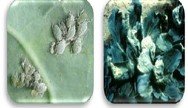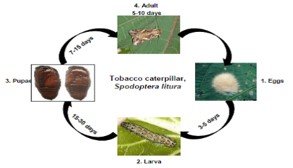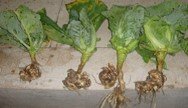Schedule
Cauliflower Crop Schedule
| Product Name | Fertilizers | ||||||
|---|---|---|---|---|---|---|---|
| Poornima Kit | NPK Grow Caps |
Humigrow Nano Powder |
Cropforce Nano Powder |
Alp | Sonha-Bihan | ||
| Humic Acid | Seaweed Extract | Chelated Multi-micronutrient |
PGP/PGR | ||||
| Land Reparation | week -2 | ||||||
| Soil Treatment | week -1 | ||||||
| Before Seed Sowing | week 0 | ||||||
| Germination | week 1 | ||||||
| Vegetative Growth | week 2 | 1 Kit | |||||
| week 3 | |||||||
| week 4 | |||||||
| week 5 | 2 Caps | 120gm | |||||
| week 6 | |||||||
| week 7 | 500gm | 500gm | |||||
| week 8 | |||||||
| week 9 | 2 Caps | 120gm | |||||
| week 10 | |||||||
| week 11 | |||||||
| week 12 | |||||||
| Harvesting | |||||||
| Total Quantity | 1 Kit | 4 Caps | 240gm | 500gm | 500gm | ||
| Broadcast | |
| Top Dressing | |
| Basal Dressing | |
| Soil Application | |
| Spray | |
| * | Optional |
NOTE: For the first year donot immidietaly substitute 100% chemical fertilizer with the SIESTO GREEN products, as the soil is used to chemical fertilizer, it may affect the output. So the best way to substitute is by reducing 50% of chemical input in the first year, 25% the following 2nd year, & then another 10% by the 3rd year. After the 3rd year use synthetic fertilizer / inorganic fertilizer if their is a requirement depending on the soil health.
CROP SCHEDULE FOR CAULIFLOWER
Sr. No.
Treatment / Application
Product
Dose / Acre
APPLICATION
Management
1
Vegetative – Dissolve in 20 to 200 ltr. of water as required for 1 acre of land and apply through Drip Irrigation or drench.
POORNIMA KIT
1 KIT
Apply it after 1 week after Transplantation which is week 2
It is a balanced form of nutrients that includes NPK, Zinc, Cropforce NP, Humigrow NP, and Mycorrhiza NP
2
Vegetative – Mix all with the required amount of water and apply through drip irrigation, flood irrigation, or drenching as per farmer’s availability.
NPK + Humigrow
2 Caps + 120gm
Apply it in week 5 & week 9
It is a balanced form of Nutrition that includes NPK.
3
Fruiting – Mix both in 20 – 200 liters of water as per requirement and apply it in soil.
ALP + Sonhabihan
250gm + 250gm
Apply it in week 7
It is a Micronutrient and PGP that helps in Growth, Fruit set, and the quality of the produce.
PEST ATTACKS, BACTERIAL, OR FUNGAL MANAGEMENT
PEST / BACTERIAL / FUNGAL
IDENTIFICATION IN CROP
SYMPTOMS
SUGGESTED PRODUCT
Diamondback Moth
 Caterpillars feed on the undersurface of leaves, bite holes in leaves and cause serious damage.
Traps + Meta + BT
Head Borer
Caterpillars feed on the undersurface of leaves, bite holes in leaves and cause serious damage.
Traps + Meta + BT
Head Borer
 Caterpillars web the leaves and bore into the stem, stalk, or leaf veins. They bore into the cabbage head also making it unfit for consumption.
Traps + Meta + BT
Leaf Webber
Caterpillars web the leaves and bore into the stem, stalk, or leaf veins. They bore into the cabbage head also making it unfit for consumption.
Traps + Meta + BT
Leaf Webber
 Webbed leaves with fecal matter, Skeletonized leaves.
Traps + Meta + BT
Aphids
Webbed leaves with fecal matter, Skeletonized leaves.
Traps + Meta + BT
Aphids
 This pest infests crucifers in the cold season. Both the nymphs and adults suck sap from plants causing a loss of vigor.
Lifeline + Traps + Meta + BT
Tobacco Caterpillar
This pest infests crucifers in the cold season. Both the nymphs and adults suck sap from plants causing a loss of vigor.
Lifeline + Traps + Meta + BT
Tobacco Caterpillar
 In early stages, the caterpillars are gregarious and scrape the chlorophyll content of leaf lamina giving it a papery white appearance.
Traps + Meta + BT
Damping Off
In early stages, the caterpillars are gregarious and scrape the chlorophyll content of leaf lamina giving it a papery white appearance.
Traps + Meta + BT
Damping Off
 It occurs in two stages, i.e. the pre-emergence and the post-emergence phase.
In the pre-emergence phase, the seedlings are killed just before they reach the soil surface. The post-emergence phase is characterized by the infection of the young, juvenile tissues of the collar at the ground level.
Indofa + Bacillus
Club root
It occurs in two stages, i.e. the pre-emergence and the post-emergence phase.
In the pre-emergence phase, the seedlings are killed just before they reach the soil surface. The post-emergence phase is characterized by the infection of the young, juvenile tissues of the collar at the ground level.
Indofa + Bacillus
Club root
 Stunting and yellowing of plants, Leaves become yellowish and wilt on hot days. Club-like swelling of root and rootlets.
Indofa + Bacillus
Alternaria Leaf Spot
Stunting and yellowing of plants, Leaves become yellowish and wilt on hot days. Club-like swelling of root and rootlets.
Indofa + Bacillus
Alternaria Leaf Spot
 Spots are small, dark-colored, They enlarge, and soon become circular & 1mm. in diameter
Indofa + Bacillus
Black Rot
Spots are small, dark-colored, They enlarge, and soon become circular & 1mm. in diameter
Indofa + Bacillus
Black Rot
 First, appear as chlorotic or yellow (angular) areas near the leaf margins. The yellow area extends to veins and midrib forming characteristic ‘v-shaped chlorotic spots which later turn black.
Indofa + Bacillus
Downy Mildew
First, appear as chlorotic or yellow (angular) areas near the leaf margins. The yellow area extends to veins and midrib forming characteristic ‘v-shaped chlorotic spots which later turn black.
Indofa + Bacillus
Downy Mildew
 Small purplish brown spots on the undersurface of leaves. Small, pale yellow angular spots on the upper surface of leaves, with downy growth on the under surface. The spots coalesce and the leaves shrivel and dry up prematurely.
Life-line + Indofa + BT + Bacillus
Powdery Mildew
Small purplish brown spots on the undersurface of leaves. Small, pale yellow angular spots on the upper surface of leaves, with downy growth on the under surface. The spots coalesce and the leaves shrivel and dry up prematurely.
Life-line + Indofa + BT + Bacillus
Powdery Mildew
 White powdery spots on the upper surface of leaves, stems, flower parts, etc.
Life-line + Indofa + BT + Bacillus
White Rust
White powdery spots on the upper surface of leaves, stems, flower parts, etc.
Life-line + Indofa + BT + Bacillus
White Rust
 White, shiny raised blisters (pustules) on the lower surfaces of leaves, stems, and flowers.
BT + Bacillus Subtilis
White, shiny raised blisters (pustules) on the lower surfaces of leaves, stems, and flowers.
BT + Bacillus Subtilis
 Caterpillars feed on the undersurface of leaves, bite holes in leaves and cause serious damage.
Traps + Meta + BT
Head Borer
Caterpillars feed on the undersurface of leaves, bite holes in leaves and cause serious damage.
Traps + Meta + BT
Head Borer
 Caterpillars web the leaves and bore into the stem, stalk, or leaf veins. They bore into the cabbage head also making it unfit for consumption.
Traps + Meta + BT
Leaf Webber
Caterpillars web the leaves and bore into the stem, stalk, or leaf veins. They bore into the cabbage head also making it unfit for consumption.
Traps + Meta + BT
Leaf Webber
 Webbed leaves with fecal matter, Skeletonized leaves.
Traps + Meta + BT
Aphids
Webbed leaves with fecal matter, Skeletonized leaves.
Traps + Meta + BT
Aphids
 This pest infests crucifers in the cold season. Both the nymphs and adults suck sap from plants causing a loss of vigor.
Lifeline + Traps + Meta + BT
Tobacco Caterpillar
This pest infests crucifers in the cold season. Both the nymphs and adults suck sap from plants causing a loss of vigor.
Lifeline + Traps + Meta + BT
Tobacco Caterpillar
 In early stages, the caterpillars are gregarious and scrape the chlorophyll content of leaf lamina giving it a papery white appearance.
Traps + Meta + BT
Damping Off
In early stages, the caterpillars are gregarious and scrape the chlorophyll content of leaf lamina giving it a papery white appearance.
Traps + Meta + BT
Damping Off
 It occurs in two stages, i.e. the pre-emergence and the post-emergence phase.
In the pre-emergence phase, the seedlings are killed just before they reach the soil surface. The post-emergence phase is characterized by the infection of the young, juvenile tissues of the collar at the ground level.
Indofa + Bacillus
Club root
It occurs in two stages, i.e. the pre-emergence and the post-emergence phase.
In the pre-emergence phase, the seedlings are killed just before they reach the soil surface. The post-emergence phase is characterized by the infection of the young, juvenile tissues of the collar at the ground level.
Indofa + Bacillus
Club root
 Stunting and yellowing of plants, Leaves become yellowish and wilt on hot days. Club-like swelling of root and rootlets.
Indofa + Bacillus
Alternaria Leaf Spot
Stunting and yellowing of plants, Leaves become yellowish and wilt on hot days. Club-like swelling of root and rootlets.
Indofa + Bacillus
Alternaria Leaf Spot
 Spots are small, dark-colored, They enlarge, and soon become circular & 1mm. in diameter
Indofa + Bacillus
Black Rot
Spots are small, dark-colored, They enlarge, and soon become circular & 1mm. in diameter
Indofa + Bacillus
Black Rot
 First, appear as chlorotic or yellow (angular) areas near the leaf margins. The yellow area extends to veins and midrib forming characteristic ‘v-shaped chlorotic spots which later turn black.
Indofa + Bacillus
Downy Mildew
First, appear as chlorotic or yellow (angular) areas near the leaf margins. The yellow area extends to veins and midrib forming characteristic ‘v-shaped chlorotic spots which later turn black.
Indofa + Bacillus
Downy Mildew
 Small purplish brown spots on the undersurface of leaves. Small, pale yellow angular spots on the upper surface of leaves, with downy growth on the under surface. The spots coalesce and the leaves shrivel and dry up prematurely.
Life-line + Indofa + BT + Bacillus
Powdery Mildew
Small purplish brown spots on the undersurface of leaves. Small, pale yellow angular spots on the upper surface of leaves, with downy growth on the under surface. The spots coalesce and the leaves shrivel and dry up prematurely.
Life-line + Indofa + BT + Bacillus
Powdery Mildew
 White powdery spots on the upper surface of leaves, stems, flower parts, etc.
Life-line + Indofa + BT + Bacillus
White Rust
White powdery spots on the upper surface of leaves, stems, flower parts, etc.
Life-line + Indofa + BT + Bacillus
White Rust
 White, shiny raised blisters (pustules) on the lower surfaces of leaves, stems, and flowers.
BT + Bacillus Subtilis
White, shiny raised blisters (pustules) on the lower surfaces of leaves, stems, and flowers.
BT + Bacillus Subtilis
NUTRITION DEFICIENCY
NUTRIENT
IDENTIFICATION
SYMPTOMS
SUGGESTED PRODUCT
Nitrogen Deficiency
 The symptoms start on the older leaves and after a while spread over the whole plant.
Azoss Caps/ Azoto caps
Phosphorus
The symptoms start on the older leaves and after a while spread over the whole plant.
Azoss Caps/ Azoto caps
Phosphorus
 P deficiency results in severe growth reduction. Plant color and habitus are not affected.
PSB Plus
Potash
P deficiency results in severe growth reduction. Plant color and habitus are not affected.
PSB Plus
Potash
 Older Leaves show brown, withered, and brittle necrotic border zones. With an ongoing deficiency, necrosis progresses from the edge to the middle. Leaf margins are cupped upwards.
Potash Grow Caps
Sulphur
Older Leaves show brown, withered, and brittle necrotic border zones. With an ongoing deficiency, necrosis progresses from the edge to the middle. Leaf margins are cupped upwards.
Potash Grow Caps
Sulphur
 Young plants show chlorosis of the younger leaves. General plant development is delayed and growth is stunted.
Sulphur Grow Caps
Copper
Young plants show chlorosis of the younger leaves. General plant development is delayed and growth is stunted.
Sulphur Grow Caps
Copper
 Stunted growth is caused by Cu deficiency.
ALP
Iron
Stunted growth is caused by Cu deficiency.
ALP
Iron
 Leaf blades are smaller than usual, whereas petioles are somewhat longer.
ALP
Manganese
Leaf blades are smaller than usual, whereas petioles are somewhat longer.
ALP
Manganese
 Young leaves show yellow-green mottling, caused by interveinal chlorosis. Leaf blades are enlarged, but not cupped inwards as usual.
ALP
Molybdenum
Young leaves show yellow-green mottling, caused by interveinal chlorosis. Leaf blades are enlarged, but not cupped inwards as usual.
ALP
Molybdenum
 Mo-deficient plants show faint yellow-green chlorosis. Leaves of young plants are relatively small and bent down.
ALP
Zinc
Mo-deficient plants show faint yellow-green chlorosis. Leaves of young plants are relatively small and bent down.
ALP
Zinc
 Affected plants show stunted growth and a faint yellow-green leaf color. Loose plant habitus with rather elongated leaf shape and inhibited head forming.
Zinc Grow Caps
Affected plants show stunted growth and a faint yellow-green leaf color. Loose plant habitus with rather elongated leaf shape and inhibited head forming.
Zinc Grow Caps
 The symptoms start on the older leaves and after a while spread over the whole plant.
Azoss Caps/ Azoto caps
Phosphorus
The symptoms start on the older leaves and after a while spread over the whole plant.
Azoss Caps/ Azoto caps
Phosphorus
 P deficiency results in severe growth reduction. Plant color and habitus are not affected.
PSB Plus
Potash
P deficiency results in severe growth reduction. Plant color and habitus are not affected.
PSB Plus
Potash
 Older Leaves show brown, withered, and brittle necrotic border zones. With an ongoing deficiency, necrosis progresses from the edge to the middle. Leaf margins are cupped upwards.
Potash Grow Caps
Sulphur
Older Leaves show brown, withered, and brittle necrotic border zones. With an ongoing deficiency, necrosis progresses from the edge to the middle. Leaf margins are cupped upwards.
Potash Grow Caps
Sulphur
 Young plants show chlorosis of the younger leaves. General plant development is delayed and growth is stunted.
Sulphur Grow Caps
Copper
Young plants show chlorosis of the younger leaves. General plant development is delayed and growth is stunted.
Sulphur Grow Caps
Copper
 Stunted growth is caused by Cu deficiency.
ALP
Iron
Stunted growth is caused by Cu deficiency.
ALP
Iron
 Leaf blades are smaller than usual, whereas petioles are somewhat longer.
ALP
Manganese
Leaf blades are smaller than usual, whereas petioles are somewhat longer.
ALP
Manganese
 Young leaves show yellow-green mottling, caused by interveinal chlorosis. Leaf blades are enlarged, but not cupped inwards as usual.
ALP
Molybdenum
Young leaves show yellow-green mottling, caused by interveinal chlorosis. Leaf blades are enlarged, but not cupped inwards as usual.
ALP
Molybdenum
 Mo-deficient plants show faint yellow-green chlorosis. Leaves of young plants are relatively small and bent down.
ALP
Zinc
Mo-deficient plants show faint yellow-green chlorosis. Leaves of young plants are relatively small and bent down.
ALP
Zinc
 Affected plants show stunted growth and a faint yellow-green leaf color. Loose plant habitus with rather elongated leaf shape and inhibited head forming.
Zinc Grow Caps
Affected plants show stunted growth and a faint yellow-green leaf color. Loose plant habitus with rather elongated leaf shape and inhibited head forming.
Zinc Grow Caps


